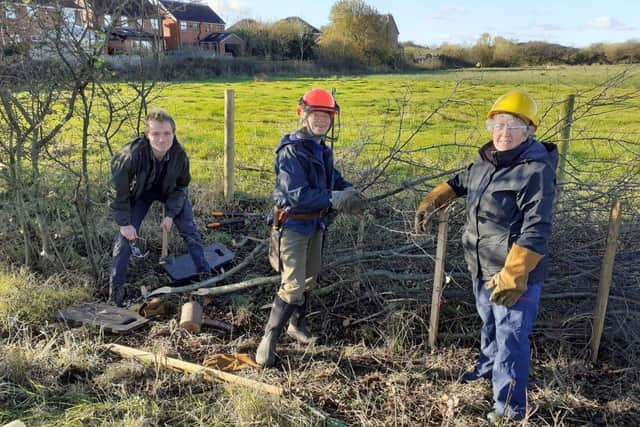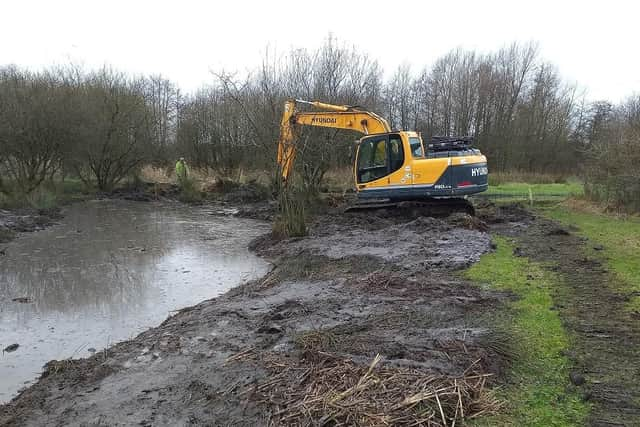Wigan borough nature reserve has come to life thanks to trust's hard work
and live on Freeview channel 276
The Wildlife Trust for Lancashire, Manchester and North Merseyside has been working on what was once poorly maintained agricultural land at Cutacre in Tyldesley, on the border between Wigan and Salford.
Recent funding for the project has come from the Government’s Green Recovery Challenge Fund, Viridor Environmental Credits, Landfill Communities Fund and Wigan Council’s Brighter Borough Fund.
Advertisement
Hide AdAdvertisement
Hide Ad

Martyn Walker, conservation officer for Greater Manchester, said: “Four overgrown and silted-up ponds have been restored to create areas of open water. These will support breeding amphibians, including the rare and protected great crested newt.
“Staff and our amazing volunteers have installed five water troughs and a water connection, with more than 600m of underground pipe, within the fields. This will allow our cattle to graze the fields in a way that benefits wildflowers and wading birds.”
The team has cut back eight hectares of dense rush, opening up areas for birds to breed and flowers to become established.
That dense rush was discouraging the highland and longhorn cattle that tear up the grass, leaving clumps of vegetation and muddy areas, which are perfect for birds like the lapwing and curlew.
Advertisement
Hide AdAdvertisement
Hide Ad

Martyn said: “The work we have done has transformed an area that was just a little bit scruffy and not serving a purpose, into a place where wildlife can thrive. The plants growing there will add lots of colour which should delight anyone visiting Cutacre.
“Without funding these areas would deteriorate but local people and visiting naturalists now have a wild and lovely area which will literally be buzzing and croaking with wildlife in spring and summer.”
Over the past six years, management of the reserve has been aimed at encouraging rare farmland birds to breed.
Areas have now opened up for flowers such as cuckooflower, lesser spearwort, ragged robin and marsh bedstraw.
Advertisement
Hide AdAdvertisement
Hide AdMartyn said “The site offers some amazing opportunities to see wildlife, with grasshopper warbler, reed bunting, linnet, and stonechat being found in the scrubby areas of the site. Bullfinch, now a scarce bird, can be found within the woodland, whilst snipe, a long-billed wading bird, can be seen foraging around the edge of pools, which is exciting being so close to an urban area.”
